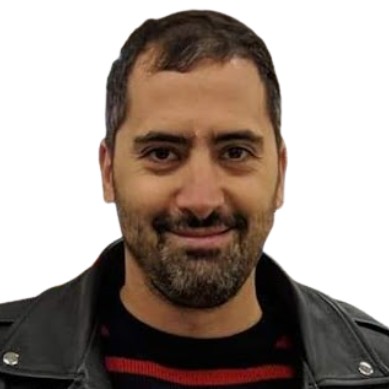Andrea D'Intino - Signroom
Zenroom based signature and credential platform

Can you introduce yourself and your project?
I’m Andrea, CEO and Co-Founder of Forkbomb B.V. Our project is Signroom an open-source document signature solution.
What are the key issues you see with the state of the internet today?

Privacy and security, more than ever!
We’re mainly involved with EUDI-ARF development, whose privacy assessment has been poised since the beginning, and the signature of documents is deeply connected to this issue.
Document signatures work with 30-year-old standards (X.509). Most of the software available is closed source, and the few open-source software are written in Java, limiting the solutions’ extendability and portability.
How does your project contribute to correcting some of those issues?
We strive every day to make the internet a safer and privacy-enabled place.
With Signroom, we implemented:
- A web-based, mobile-friendly (and extendable to mobile native) solution to offer signatures and verification of documents, following the industry standard recognized by the EU (PaDES/CaDES/XaDES/JaDES).
- The secret keys and identities can be connected to modern digital identities (W3C-DID) and will later support the EUDI-ARF identity format (the PIDs).
- The identity solution follows the end-to-end encryption principles by executing all the signatures in the client (in the browser). At the same time, the PaDES/CaDES files are packaged using the server designated and developed by the European Commission.
What do you like most about (working on) your project?
The collaborations we set up with multiple actors working with EUDI-ARF standardization and implementation, including the team on the Italian digital wallet, the author of the OpenID standards, and the EWC consortium, helped us make our application future-proof.
Where will you take your project next?
We’re bringing the solution to market, aiming to help organizations implement a digital identity strategy using our ultra-low-code microservice-powered solution.
How did NGI Assure help you reach your goals for your project?
NGI provided valuable feedback and contacts with other developers who became our partners on the way.
Do you have advice for people who are considering to apply for NGI funding?
Be aware that you’re not pitching a VC: read the guidelines carefully and check the projects that previously got funding. If your application gets rejected, make the best out of the rejection motivation and use it to improve your application… then re-apply!
Do you have any recommendations to improve future NGI programs or the wider NGI initiative?
As Dyne.org, we did run the first cascade funding ever, the Ledger Project. We’re happy to see that a lot of the setup we came up with back then is still used by several NGI projects, including those operated by NLNet.
I would like to see more investment in marketing: I believe it would be highly beneficial for NGI projects to reserve a part of the budget for commercial events such as trade shows and conferences.
Acknowledgements
Images: courtesy of Andrea D'Intino.
Published on September 10, 2024
Signroom received funding through the NGI Assure Fund, a fund established by NLnet with financial support from the European Commission's Next Generation Internet programme, under the aegis of DG Communications Networks, Content and Technology under grant agreement No 957073.


